 Anything is possihle, one stroke at a time. eISBN: 978-1-60765-098-0 ISBN: 978-1-57421-327-0 Zentangle turns drawings into artistic design while reducing stress and improving focus. This relaxing process can be done anywhere and no artistic talent is needed. Embellish journals, scrapbooks, art, paintings and cards. There is really no limit to creativity. The Zentangle Basics book helps students and educators get started. It features step-by-step illustrations for 25 tangles.
Anything is possihle, one stroke at a time. eISBN: 978-1-60765-098-0 ISBN: 978-1-57421-327-0 Zentangle turns drawings into artistic design while reducing stress and improving focus. This relaxing process can be done anywhere and no artistic talent is needed. Embellish journals, scrapbooks, art, paintings and cards. There is really no limit to creativity. The Zentangle Basics book helps students and educators get started. It features step-by-step illustrations for 25 tangles.
Also included are tips for how to relate Zentangle to learning for spelling, math, social studies, geometry and art. Developed by Rick Roberts and Maria Thomas, traditional Zentangle includes a ritual to help get in touch with life while creating beautiful art. Zentangle is used as a learning skill for school children, as stress reduction for adults and it helps in developing dexterity. In addition, Zentangles can be fabulous works of art that resemble etchings. Suzanne McNeill, CZT shares great tips on including Zentangle in your art and in your life.  For a color catalog featuring over 200 terrific How-To books, visit www.d-originals.com COPY PERMISSION - The written instructions, photographs, designs, patterns and projects in this publication are intended for the personal use of the reader and may be reproduced for that purpose only.
For a color catalog featuring over 200 terrific How-To books, visit www.d-originals.com COPY PERMISSION - The written instructions, photographs, designs, patterns and projects in this publication are intended for the personal use of the reader and may be reproduced for that purpose only.  For a color catalog featuring over 200 terrific How-To books, visit www.d-originals.com COPY PERMISSION - The written instructions, photographs, designs, patterns and projects in this publication are intended for the personal use of the reader and may be reproduced for that purpose only.
For a color catalog featuring over 200 terrific How-To books, visit www.d-originals.com COPY PERMISSION - The written instructions, photographs, designs, patterns and projects in this publication are intended for the personal use of the reader and may be reproduced for that purpose only.
Any other use, especially commercial use, is forbidden under law without the written permission of the copyright holder. Every effort has been made to ensure that all information in this book is accurate. However, due to differing conditions, tools and individual skills, neither the author nor publisher can be responsible for any injuries, losses, and other damages which may result from the use of the information in this book. INFORMATION - All rights reserved. All images in this book have been reproduced with the knowledge and prior consent of the artists concerned and no responsibility is accepted by producer, publiser, or printer for any infringement of copyright or otherwise, arising from the contents of this publication. Every effort has been made to ensure that credits accurately comply with information supplied.
NOTE: The use of products and trademark names is for information purposes only, with no intention of infringement upon those trademarks. NOTE: The use of products and trademark names is for information purposes only, with no intention of infringement upon those trademarks. 2010 DESIGN ORIGINALS www.d-originals.com 800-457-9112 1970 Broad Street, East Petersburg, PA 17520 eBook version 1.0 What youll need to get started a black permanent marker
a black permanent marker
Micron 01 Pigma pigment ink pen by Sakura is suggested for ChildrenBejel of Difficulty: Till Heiels, ages 5 and upZentangle can be done by almost any age children, teens and adults. Most younger children find it easier to draw big while they are still developing dexterity. To begin, I recommend a black 08 Pigma pen. Teens and tweens love to draw Tangles. Teens and tweens love to draw Tangles.
for ChildrenBejel of Difficulty: Till Heiels, ages 5 and upZentangle can be done by almost any age children, teens and adults. Most younger children find it easier to draw big while they are still developing dexterity. To begin, I recommend a black 08 Pigma pen. Teens and tweens love to draw Tangles. Teens and tweens love to draw Tangles.
A black Micron 08 Pigma pen works well, and students feel totally comfortable with 31/2 tiles, 51/2 tiles, or 81/2 square tiles. TIP: Sturdy paper such as 60# cover or 100# cardstock works well.  How to Get Started
How to Get Started 1. Use a pencil to make a dot in each corner.
1. Use a pencil to make a dot in each corner. 2. Connect the dots.
2. Connect the dots. 3. Draw a string as a guide line.
3. Draw a string as a guide line.
Try a  zigzag, a
zigzag, a  loop, an
loop, an  Xor a swirl.
Xor a swirl. 4. Switch to a pen and draw tangle patterns into the sections formed by the string.Traditional ZentanglesA very simple process is part of every traditional Zentangle. 1. Make a dot in each corner of a paper tile with a pencil. Connect dots to form a basic frame. 2.
4. Switch to a pen and draw tangle patterns into the sections formed by the string.Traditional ZentanglesA very simple process is part of every traditional Zentangle. 1. Make a dot in each corner of a paper tile with a pencil. Connect dots to form a basic frame. 2.
Draw guideline strings with the pencil. The shape can be a zigzag, swirl, X, circle or just about anything that divides the area into sections. It represents the golden thread that connects all the patterns and events that run through life. The lines will not be erased but become part of the design. 3. 4. 4.
Rotate the paper tile as you fill each section with a pattern. TipsWhen you cross a line, change the pattern. It is OK to leave some sections blank.  Each Tangle is a unique artistic design and there are hundreds of variations. Start with basic patterns, then create your own. With Zentangle, no eraser is needed.
Each Tangle is a unique artistic design and there are hundreds of variations. Start with basic patterns, then create your own. With Zentangle, no eraser is needed.
Just as in life, we cannot erase events and mistakes, instead we must build upon them and make improvements from any event. Life is a building process. All experiences are included into our learning process and into our life patterns. 
 Crescent Moon1. Draw curved humps along the inside edges of any section. 2.
Crescent Moon1. Draw curved humps along the inside edges of any section. 2.
Draw a curved line on each hump to create arches or moon shapes
Next page


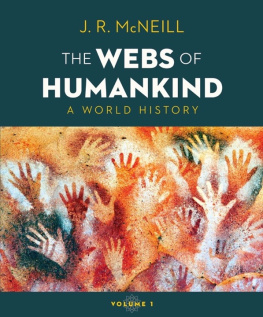


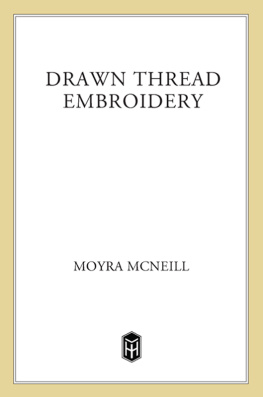
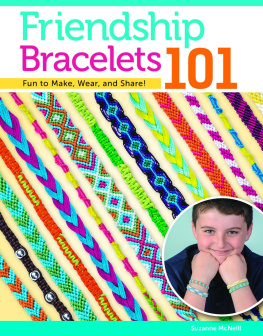
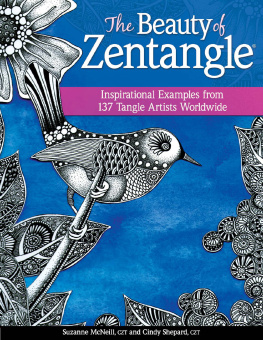
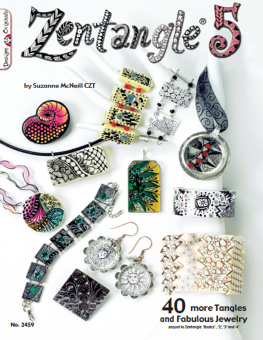
 Anything is possihle, one stroke at a time. eISBN: 978-1-60765-098-0 ISBN: 978-1-57421-327-0 Zentangle turns drawings into artistic design while reducing stress and improving focus. This relaxing process can be done anywhere and no artistic talent is needed. Embellish journals, scrapbooks, art, paintings and cards. There is really no limit to creativity. The Zentangle Basics book helps students and educators get started. It features step-by-step illustrations for 25 tangles.
Anything is possihle, one stroke at a time. eISBN: 978-1-60765-098-0 ISBN: 978-1-57421-327-0 Zentangle turns drawings into artistic design while reducing stress and improving focus. This relaxing process can be done anywhere and no artistic talent is needed. Embellish journals, scrapbooks, art, paintings and cards. There is really no limit to creativity. The Zentangle Basics book helps students and educators get started. It features step-by-step illustrations for 25 tangles. For a color catalog featuring over 200 terrific How-To books, visit www.d-originals.com COPY PERMISSION - The written instructions, photographs, designs, patterns and projects in this publication are intended for the personal use of the reader and may be reproduced for that purpose only.
For a color catalog featuring over 200 terrific How-To books, visit www.d-originals.com COPY PERMISSION - The written instructions, photographs, designs, patterns and projects in this publication are intended for the personal use of the reader and may be reproduced for that purpose only.  a black permanent marker
a black permanent marker for ChildrenBejel of Difficulty: Till Heiels, ages 5 and upZentangle can be done by almost any age children, teens and adults. Most younger children find it easier to draw big while they are still developing dexterity. To begin, I recommend a black 08 Pigma pen. Teens and tweens love to draw Tangles. Teens and tweens love to draw Tangles.
for ChildrenBejel of Difficulty: Till Heiels, ages 5 and upZentangle can be done by almost any age children, teens and adults. Most younger children find it easier to draw big while they are still developing dexterity. To begin, I recommend a black 08 Pigma pen. Teens and tweens love to draw Tangles. Teens and tweens love to draw Tangles. How to Get Started
How to Get Started 1. Use a pencil to make a dot in each corner.
1. Use a pencil to make a dot in each corner. 2. Connect the dots.
2. Connect the dots. 3. Draw a string as a guide line.
3. Draw a string as a guide line. zigzag, a
zigzag, a  loop, an
loop, an  Xor a swirl.
Xor a swirl. 4. Switch to a pen and draw tangle patterns into the sections formed by the string.Traditional ZentanglesA very simple process is part of every traditional Zentangle. 1. Make a dot in each corner of a paper tile with a pencil. Connect dots to form a basic frame. 2.
4. Switch to a pen and draw tangle patterns into the sections formed by the string.Traditional ZentanglesA very simple process is part of every traditional Zentangle. 1. Make a dot in each corner of a paper tile with a pencil. Connect dots to form a basic frame. 2. Each Tangle is a unique artistic design and there are hundreds of variations. Start with basic patterns, then create your own. With Zentangle, no eraser is needed.
Each Tangle is a unique artistic design and there are hundreds of variations. Start with basic patterns, then create your own. With Zentangle, no eraser is needed.
 Crescent Moon1. Draw curved humps along the inside edges of any section. 2.
Crescent Moon1. Draw curved humps along the inside edges of any section. 2.